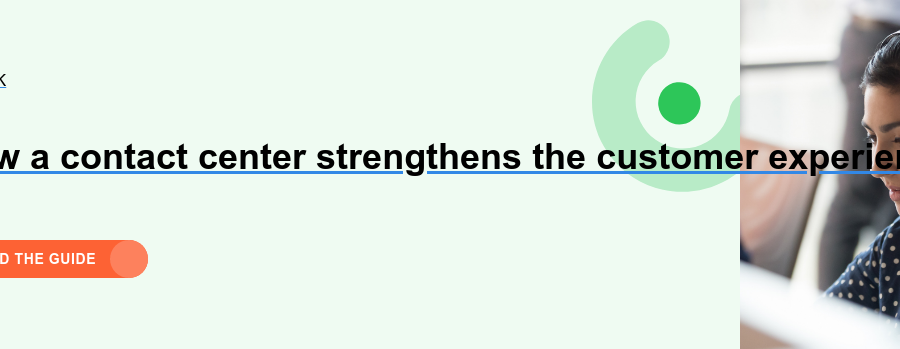A contact center is a feature that makes it possible to contact a company in a variety of ways. By using it, you can gather all your different channels to give your customers the best experience when communicating with you.
All companies with some external dialogue have a contact center – a customer service department with one purpose; to help the client. Here, everyone can get in touch with the company, no matter the question.
An efficient and well-functioning contact center collects all communication in the same platform. It's more than just calls and emails. By offering multiple ways of contact, you give the customer freedom. They can choose which channels suit them best. This contributes to an improved customer experience.
Contact center = a unified place for communication
The trouble today is that many contact channels are different systems from separate suppliers. This can make it hard to integrate, reducing your overview and hampering ticket management. The way to go is to gather your systems.
A contact center solution is made for communicating with customers, whether they prefer to use mail, call, social media, or chat. As a company, it's invaluable to gather these features in one place. That way, you can manage your customer dialogue a lot easier.
Many companies use an integrated contact center solution to keep an eye on incoming tickets. This enables you to see how you can streamline customer communication and solve tickets efficiently.
The customer decides the communication channel
90% of all customer service matters start from Google. Whether you want to cancel a subscription, check the latest invoice, or update your address, the majority will look for the most suitable channel to contact the company.
By having a unified contact center solution, you can easily minimise friction for the customer and make them find their way. This can mean displaying your mail address or phone number in search results. But a customer can also prefer to send a chat message through the company's Facebook page.
The main point is to enable ways of communication in the way the customer prefers – not according to what's easiest for you.
5 common channels in a contact center:
- Telephony – usually a cloud-based PBX with an IVR system.
- Mail – addressess for info, support, and personal emails.
- Social media – Messenger, Instagram, Twitter and more.
- Chat – live chat with a person or a chatbot.
- Knowledge base/FAQ – a page with frequently asked questions.
An efficient contact center requires competence and intelligence
In order to maximise the benefits of the contact channels, you first require people with the right know-how. A smart contact center isn't just made out of channels but different competencies. This is the most important thing to solve tickets the right way.
By dividing the contact center into groups, every customer service worker can dig into specific areas and provide efficient answers – whether a customer calls, send a chat message or leaves a comment on Facebook.

IVR (Interactive Voice Response) is a classic feature in a PBX, but it might need manual management in social channels. If you receive a ticket by mail one day and the person asks the same question on Twitter the day after, your solution should be able to handle that without the person having to repeat their customer ID, for example.
Omnichannel – for unified customer dialogue
The goal is for the customer to move freely between different channels but still retain a seamless dialogue with the company. The answer to this is omnichannel. It means that you can handle communication from various channels in one unified platform.
With a contact center with omnichannel, you can connect all your customer communication. This enables a customer to switch between a chat conversation and mail and still have a great customer experience. That's the key to happy customers.
A contact center – especially with omnichannel – paves the way for a successful customer experience. Want to know more about how a contact center gathers all communication and strengthens your customer service? Read our guide here!








